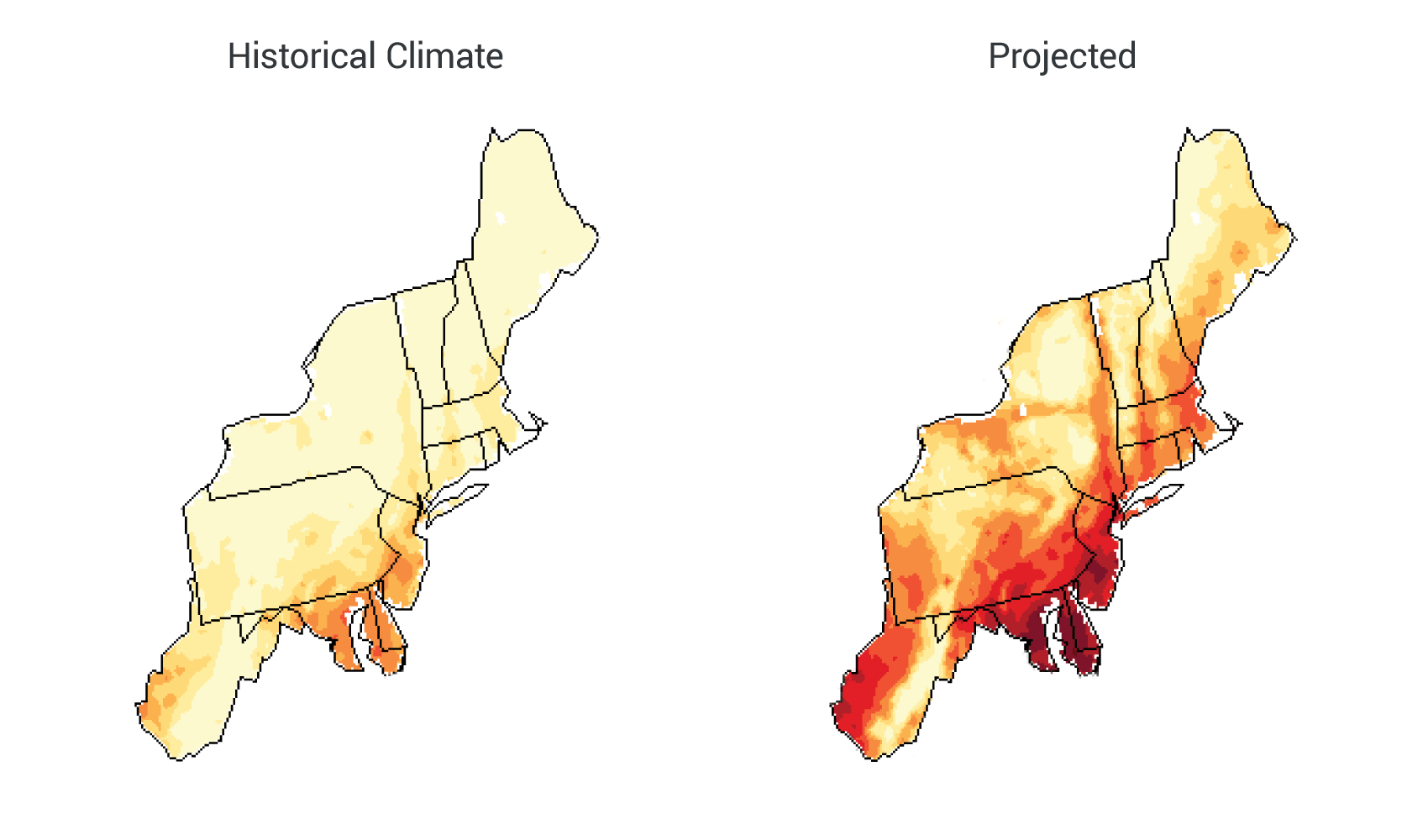Introduction
Sixty-four million people are concentrated in the Northeast. The high-density urban coastal corridor from Washington, D.C., north to Boston is one of the most developed environments in the world. It contains a massive, complex, and long-standing network of supporting infrastructure. The region is home to one of the world’s leading financial centers, the nation's capital, and many defining cultural and historical landmarks.
The region has a vital rural component as well. The Northeast includes large expanses of sparsely populated but ecologically and agriculturally important areas. Much of the Northeast landscape is dominated by forest, but the region also has grasslands, coastal zones, beaches and dunes, and wetlands, and it is known for its rich marine and freshwater fisheries. These natural areas are essential to recreation and tourism sectors and support jobs through the sale of timber, maple syrup, and seafood. They also contribute important ecosystem services to broader populations – protecting water supplies, buffering shorelines, and sequestering carbon in soils and vegetation. The twelve Northeastern states have more than 180,000 farms, with $17 billion in annual sales.117 The region’s ecosystems and agricultural systems are tightly interwoven, and both are vulnerable to a changing climate.
 ©Frank Siteman/Science Faction/Corbis
©Frank Siteman/Science Faction/Corbis
Although urban and rural regions in the Northeast have profoundly different built and natural environments, both include populations that have been shown to be highly vulnerable to climate hazards and other stresses. Both also depend on aging infrastructure that has already been stressed by climate hazards including heat waves, as well as coastal and riverine flooding due to a combination of sea level rise, storm surge, and extreme precipitation events.
The Northeast is characterized by a diverse climate.17 Average temperatures in the Northeast generally decrease to the north, with distance from the coast, and at higher elevations. Average annual precipitation varies by about 20 inches throughout the Northeast with the highest amounts observed in coastal and select mountainous regions. During winter, frequent storms bring bitter cold and frozen precipitation, especially to the north. Summers are warm and humid, especially to the south. The Northeast is often affected by extreme events such as ice storms, floods, droughts, heat waves, hurricanes, and major storms in the Atlantic Ocean off the northeast coast, referred to as nor’easters. However, variability is large in both space and time. For example, parts of southern New England that experienced heavy snows in the cold season of 2010-2011 experienced little snow during the cold season of 2011-2012. Of course, even a season with low totals can feature costly extreme events; snowfall during a 2011 pre-Halloween storm that hit most of the Northeast, when many trees were still in leaf, knocked out power for up to 10 days for thousands of households.



























